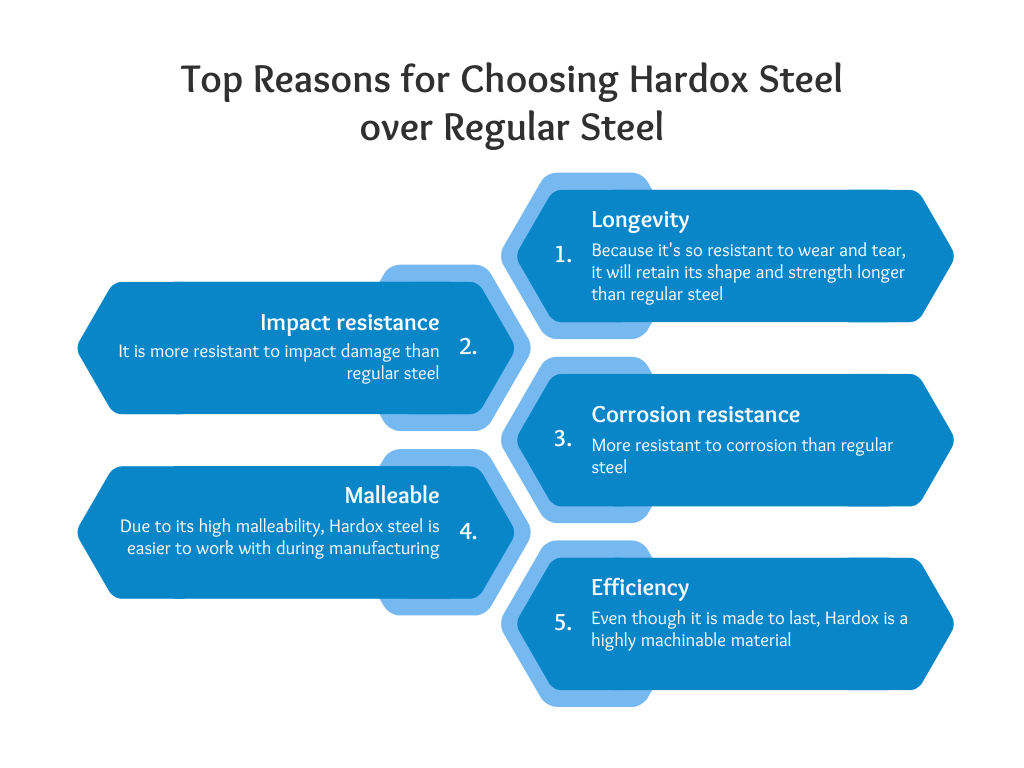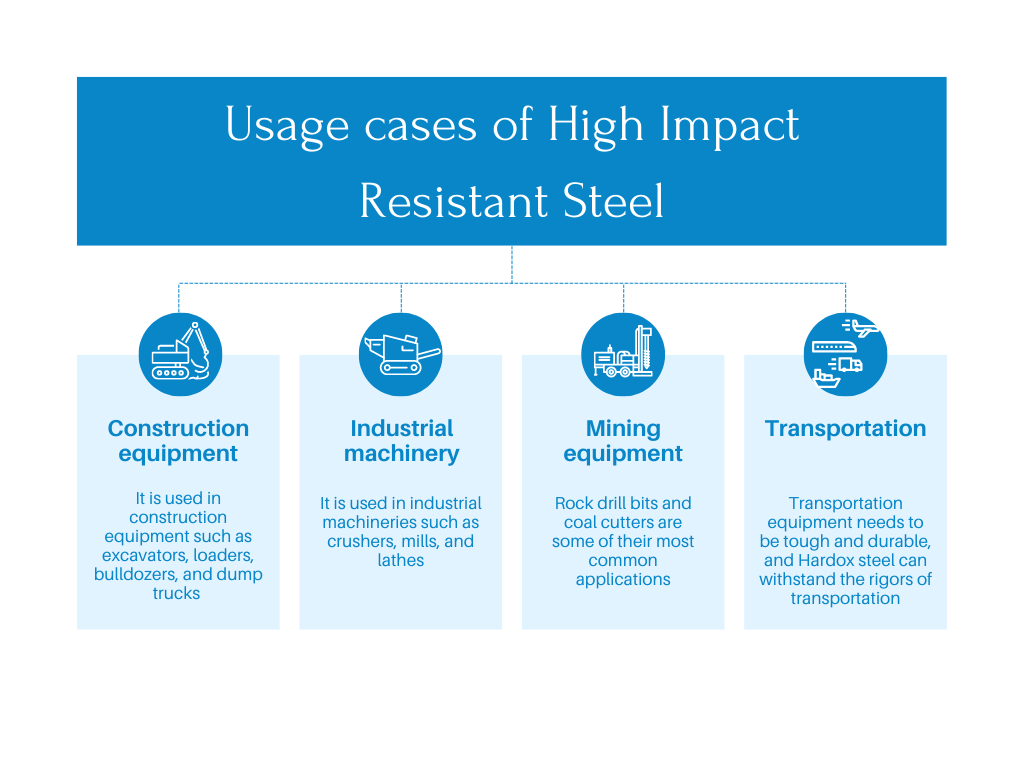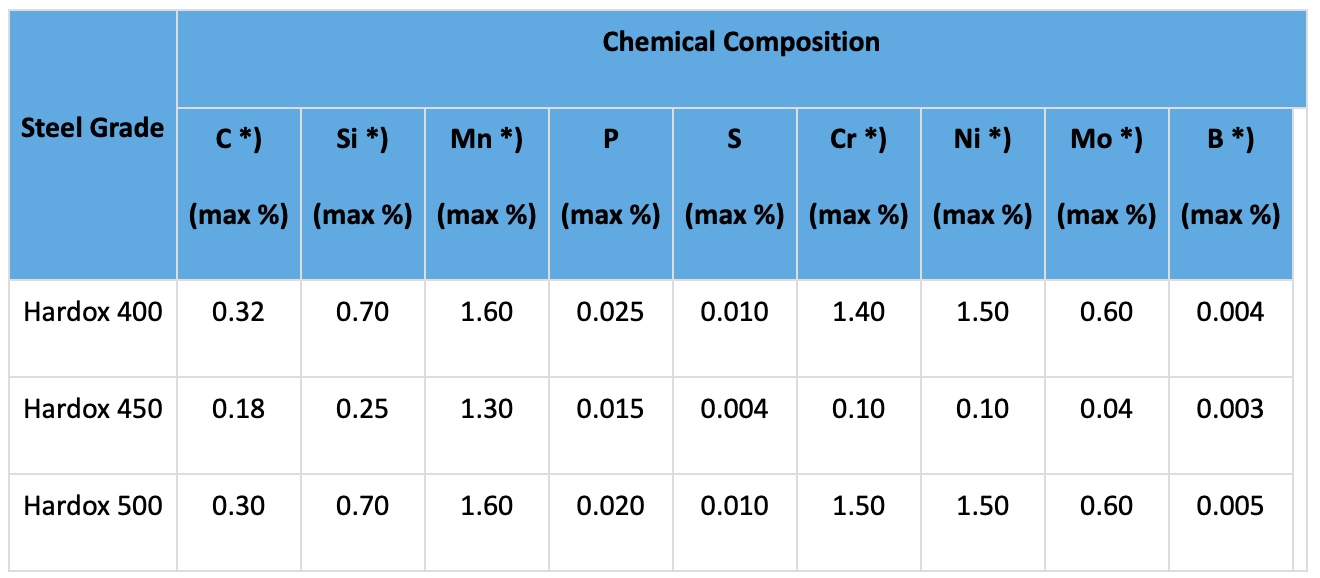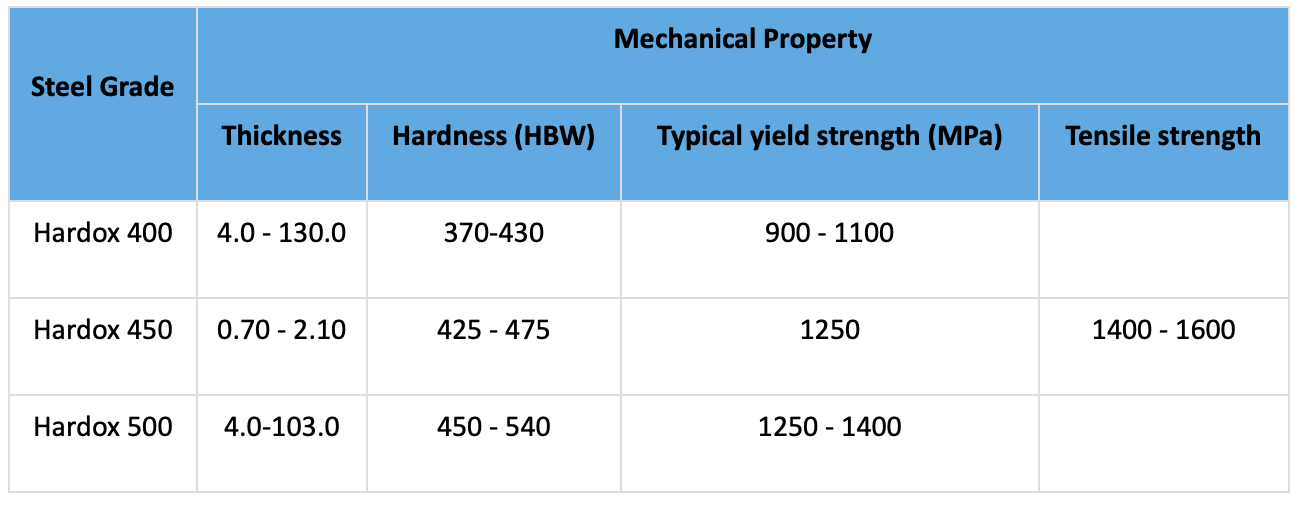As a business owner, you’re always looking for ways to improve efficiency and reduce costs. When it comes to materials, there’s one option that should be at the top of your list – Hardox steel.
What is Hardox steel? How is it made? And what are its benefits for manufacturing and fabrication companies?
In this blog post, we’ll answer these questions and more. We’ll also look at some construction and fabrication applications where Hardox steel can be used.
So if you’re thinking about using this high-quality steel in your next project, read on!
What is Hardox Steel?
Hardox is a brand of abrasion-resistant steel known for its high strength and toughness, making it ideal for use in applications where wear and tear is common. This steel has been tested against some of the harshest conditions, including being struck by 500 kg (1,100 lb) of iron ore per square centimeter!
Hardox steel is made using a process called quenching and tempering. In this process, the steel is first heated to a high temperature and then cooled rapidly. This process hardens the steel, making it more resistant to wear and tear. However, the quenching and tempering process also makes the steel more brittle, so choosing the right grade of Hardox for your application is important.
History
Hardox is Swedish wear-resistant steel that was first developed in 1974 by SSAB. It was created as an answer to increasing demands for wear-resistant materials and has since become one of the most popular wear-resistant steels on the market.
Hardox is known for its excellent toughness, abrasion resistance, and ability to withstand high impact. This steel is used in various applications, including construction, mining, and fabrication. It is also popular in the agricultural, manufacturing, and forestry industries.
Over the years, Hardox has become available in various grades and thicknesses. The most common grade is Hardox 400, which has a hardness of 400 HBW. Other popular grades include Hardox 450, 500, and 600.
Main Benefits of Hardox Steel vs. Regular Steel
If you’re in the market for a new steel product, you may wonder what the benefits are of Hardox steel over regular steel.
One of the biggest benefits of Hardox steel is its ability to resist abrasion. This means that it will retain its shape and strength longer than regular steel, making it an ideal choice for products subject to high levels of wear and tear.
In addition, it is more resistant to impact damage, meaning it’s less likely to dent or deform when hit by heavy objects.
Finally, Hardox steel is also more resistant to corrosion than regular steel, making it an ideal choice for products exposed to harsh environments. Hardox steel offers several advantages over regular steel, making it an ideal choice for a wide range of applications.
Want to learn about High-strength steels?

- Longevity
A major benefit of Hardox steel is its longevity. Because it’s so resistant to wear and tear, it will retain its shape and strength longer than regular steel, making it an ideal choice for products subject to high levels of wear and tear.
- Impact resistance
It is also more resistant to impact damage than regular steel, making it an ideal choice for products that may be subject to heavy impacts, for example, construction equipment, industrial machinery, and mining equipment.
- Corrosion resistance
Hardox steel is also more resistant to corrosion than regular steel, making it an ideal choice for products that will be exposed to harsh environments, such as chemical plants and offshore oil rigs.
- Stiffness
Due to its high tensile strength, Hardox steel has high stiffness as compare to the carbon steel. The benefiting applications are construction equipment, industrial machinery, and mining equipment.
- Efficiency
Even though it is made to last, Hardox is a highly machinable material. It is perfect for making delicate, components resistant to abrasion and wear. Due to its high durability, parts manufactured with Hardox steel increases the efficiency by reducing the maintenance/replacement cost.
Book a 60-minute demo to see
how eziil mrp solution works for you
Usage cases of High Impact Resistant Steel
The most popular applications of Hardox Steel are:
- Construction equipment:
It is used in construction equipment such as excavators, loaders, bulldozers, and dump trucks. Owing to its resistance to wear and tear, it increases the lifespan of these vehicles.
- Industrial machinery:
It is used in industrial machineries such as crushers, mills, and lathes. Industrial machinery requires materials that can withstand high levels of stress and strain, and Hardox steel is up to the task.
- Mining equipment:
Rock drill bits and coal cutters are some of their most common applications. Its chemical and physical properties favor withstanding the tough conditions in mines.
Hardox steel is also used in a variety of other applications, such as:
- Transportation:
Transportation equipment needs to be tough and durable, and Hardox steel can withstand the rigors of transportation. That’s why it is extensively used in railway cars and ship hulls.

Most popular types: Hardox 400, 450, and 500
The most popular grades of Hardox Steel are discussed below:
- Hardox 400
Hardox 400 is wear-resistant steel that is specially designed for applications where high wear resistance is required. In addition, this grade has a unique microstructure that gives it superior strength and durability. Unlike other grades of Hardox steel, the 400 grade is not heat-treated. This allows the steel to retain its toughness and wear resistance even in extreme conditions. Hardox 400 is available in various thicknesses and sizes, making it an ideal choice for various applications. It offers significantly better wear resistance and strength than regular steel, making it an excellent choice for demanding applications.
- Hardox 450
Hardox 450 is special quality steel with a nominal hardness of 450 HBW. It combines high toughness, good bendability, and weldability. The steel is suitable for applications that demand higher wear resistance. This steel can be used in structures with moderate wear thanks to its high toughness, good bendability, and weldability. Hardox 450 has a Rockwell C hardness of 30-40 HRC. This steel grade is available in thicknesses of 3–130 mm. It is not recommended for use at temperatures above 315 °C (599 °F).
- Hardox 500
Hardox 500 steel grade comes with a unique combination of toughness and hardness. With a nominal hardness of 500 HBW, it provides outstanding durability in demanding applications. The steel is also highly weldable and can be hard-faced with various wear-resistant materials. This grade has been successfully used in many applications, including dump trucks, body armor, mining equipment, agricultural machinery, and construction equipment. Hardox 500’s properties also make it an excellent choice for demanding structural applications.


Conclusion
That’s a complete overview of Hardox steel. It’s an amazing product that can offer your business some serious benefits over regular steel. If you want to learn more or are interested in using it in one of your upcoming projects, be sure to understand all of its properties and grades in detail. In the meantime, thanks for reading, and we hope this article has helped introduce you to one of the best-kept secrets in the steel industry.